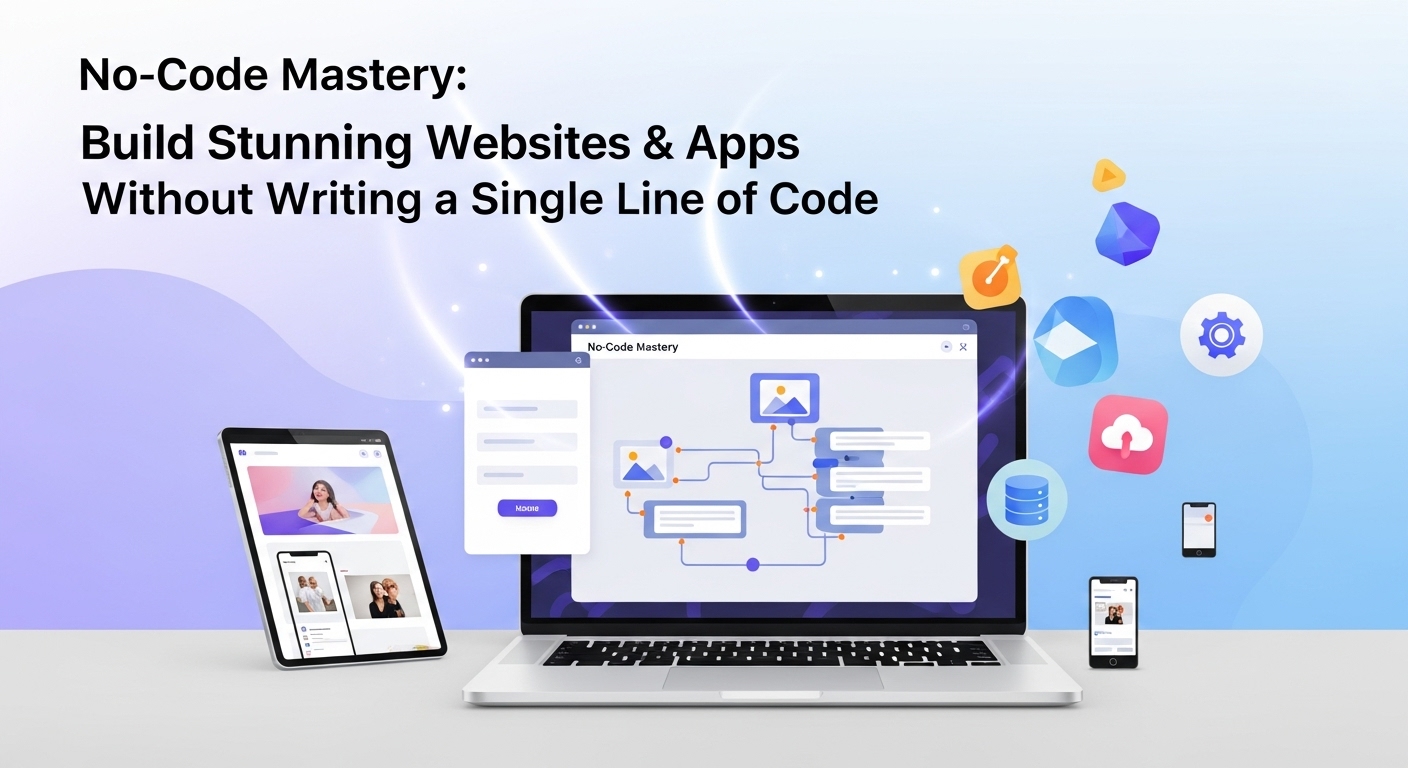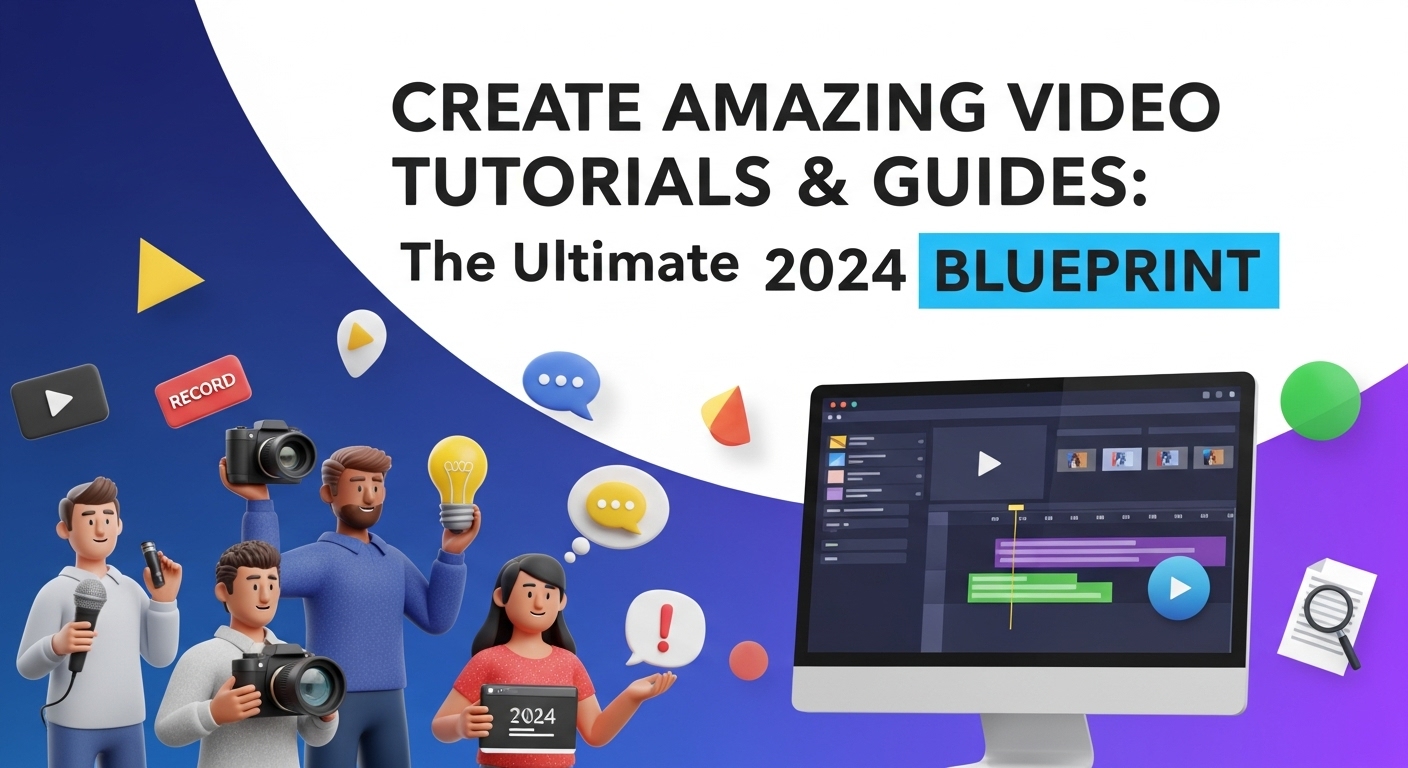The Dawn of a New Creative Era: What is No-Code?
Have you ever had a brilliant idea for a website or an app, only to be stopped by the daunting wall of code? For decades, the ability to create digital products was a privilege reserved for those who could speak the complex languages of HTML, CSS, JavaScript, and Python. But what if you could build, launch, and manage powerful digital experiences using intuitive, visual interfaces? Welcome to the no-code revolution.
The no-code movement is fundamentally changing the landscape of technology. It’s a paradigm shift that empowers entrepreneurs, designers, marketers, and creators of all backgrounds to bring their ideas to life without writing a single line of code. By using platforms with drag-and-drop editors, pre-built components, and visual workflow builders, you can construct everything from a simple landing page to a complex marketplace app. Think of it like building with digital LEGO blocks—you have all the pieces you need, and your only limit is your imagination. This isn’t about dumbing down development; it’s about making it accessible to everyone.
No-Code vs. Low-Code: What’s the Difference?
You might also hear the term ‘low-code’ thrown around. While related, they serve different purposes. No-code platforms are designed for users with zero programming knowledge. They are entirely visual. Low-code platforms, on the other hand, are for developers looking to accelerate their workflow. They offer visual tools but also allow for custom code to be added for more complex functionality. For our purposes, we’re focusing on the pure no-code experience—true digital creation for the non-coder.
Why You Should Embrace No-Code Development Today
The rise of no-code isn’t just a trend; it’s a response to a growing need for speed, efficiency, and empowerment in the digital world. The benefits are tangible and can have a massive impact on your projects, whether personal or professional.
1. Unprecedented Speed and Agility
Traditional development can take months, even for a simple application. With no-code, you can build a functional prototype or a minimum viable product (MVP) in a matter of days, or even hours. This speed allows you to get your product in front of users faster, gather feedback, and iterate quickly, giving you a significant competitive advantage.
2. Drastic Cost Reduction
Hiring a team of developers is expensive. By using no-code tools, you can significantly cut down on development costs. Many platforms operate on a subscription model that is a fraction of the cost of a developer’s salary. This opens up opportunities for startups, small businesses, and solo entrepreneurs who might have been priced out of the market before.
3. The Democratization of Technology
Perhaps the most profound benefit of no-code is its power to democratize creation. It breaks down the barrier between idea and execution. A marketer can build a custom campaign landing page, a restaurant owner can create an online ordering system, and a teacher can develop an educational app. You are no longer dependent on a technical team to innovate.
4. Seamless Integration and Scalability
Modern no-code platforms are not isolated islands. They are built to connect with the tools you already use. Through APIs and integrations (like Zapier or Make), you can connect your no-code creation to CRMs, email marketing services, payment gateways, and thousands of other applications. And don’t mistake ‘no-code’ for ‘no-power’—many of these platforms are built to scale, capable of handling significant user traffic and data.
Top No-Code Platforms for Building Stunning Websites
Your journey into no-code often starts with a website. It’s your digital storefront, your portfolio, your platform. Here are some of the best tools to get you started, each with its own strengths.
Webflow: For the Design-Obsessed
Webflow is the darling of the design community for a reason. It offers unparalleled design freedom, allowing you to control every pixel without writing code. It essentially translates visual design into clean, semantic HTML and CSS. It’s perfect for marketing sites, portfolios, and blogs that require a high degree of custom design. It also boasts a powerful built-in CMS (Content Management System) and e-commerce capabilities.
Bubble: The Powerhouse for Web Applications
If your idea is more complex than a simple website—think a social network, a marketplace, or an internal tool—Bubble is your go-to. Bubble is a visual programming tool that lets you build full-fledged web applications. You can design the interface, configure complex workflows, and manage a database, all visually. The learning curve is steeper than other website builders, but the power it unlocks is immense.
Carrd: For Simple, Beautiful One-Pagers
Sometimes, all you need is a single, elegant page. Carrd specializes in this. It’s the fastest way to build simple, fully responsive one-page sites for anything from a personal profile to a landing page for an event or product. It’s incredibly easy to use and remarkably affordable.
Creating Powerful Apps Without Code
Ready to move beyond websites? The no-code app development space is exploding with tools that let you build sophisticated mobile and web apps.
Adalo: Build Native Mobile Apps Visually
Adalo empowers you to build and publish native mobile apps to the Apple App Store and Google Play Store. Using a drag-and-drop interface, you can design your screens, link them together, and connect them to your own database. It’s an excellent choice for creating apps like directories, booking systems, or simple social platforms.
Glide: Turn Spreadsheets into Apps in Minutes
What if you could turn a Google Sheet into a functional app? That’s the magic of Glide. It’s one of the easiest and fastest ways to create data-driven apps. If your data lives in a spreadsheet, you can have a beautiful, working app in minutes. It’s perfect for internal tools, employee directories, inventory trackers, and event apps.
Softr: The Easiest Way to Build on Airtable
Airtable has become a beloved tool for organizing data, acting as a hybrid between a spreadsheet and a database. Softr takes this a step further by allowing you to build beautiful and powerful front-ends for your Airtable bases. You can create client portals, internal tools, marketplaces, and online communities with ease, all powered by the data you already have in Airtable.
Your First No-Code Project: A Step-by-Step Guide
Feeling inspired? The best way to learn is by doing. Let’s walk through the basic steps to build your first project. Our collection of tutorials & guides is designed to help you succeed.
Step 1: Define Your Goal and Choose Your Platform
What do you want to build? A portfolio to showcase your work? A landing page for your new ebook? A directory of local coffee shops? Clearly define your project’s core purpose. Based on this goal, select the right tool. For a portfolio, Webflow or Carrd would be great. For the coffee shop directory app, Glide or Adalo would be a better fit.
Step 2: Map Out the User Journey and Design Your UI
Before you start dragging and dropping, sketch out how a user will interact with your site or app. What pages or screens do they need? What buttons will they click? Once you have a rough plan, jump into your chosen platform and start designing the User Interface (UI). Focus on creating a clean, intuitive, and visually appealing layout. Add your text, images, and branding.
Step 3: Configure Your Data and Logic
This is where your creation comes to life. If you’re building a website, this might involve setting up your CMS collections for blog posts or portfolio items. If you’re building an app, it means setting up your database (e.g., a list of coffee shops with their names, addresses, and photos) and defining the logic. For example: ‘When a user clicks the ‘Submit’ button, create a new entry in the database.’
Step 4: Test, Iterate, and Launch!
Never launch without thorough testing. Click every button, fill out every form, and view your project on different devices (desktop, tablet, mobile) to ensure it’s responsive. Share a preview with friends or colleagues to get feedback. Make adjustments based on their input. Once you’re confident it’s ready, hit that publish button and share your creation with the world!
Start Your No-Code Journey Today!
The barrier to entry for creating on the web has never been lower. The no-code movement has unlocked a world of possibility, putting the power of software development into the hands of the creative, the ambitious, and the problem-solvers—regardless of their technical background. You don’t need to be a coder to be a builder anymore. The tools are here, they are powerful, and they are ready for you.
So, what are you waiting for? Pick an idea, choose a platform from our guides, and start building. Your next project is not lines of code away; it’s just a few clicks away. Dive in, experiment, and discover what you can create. The digital world is yours to shape.


